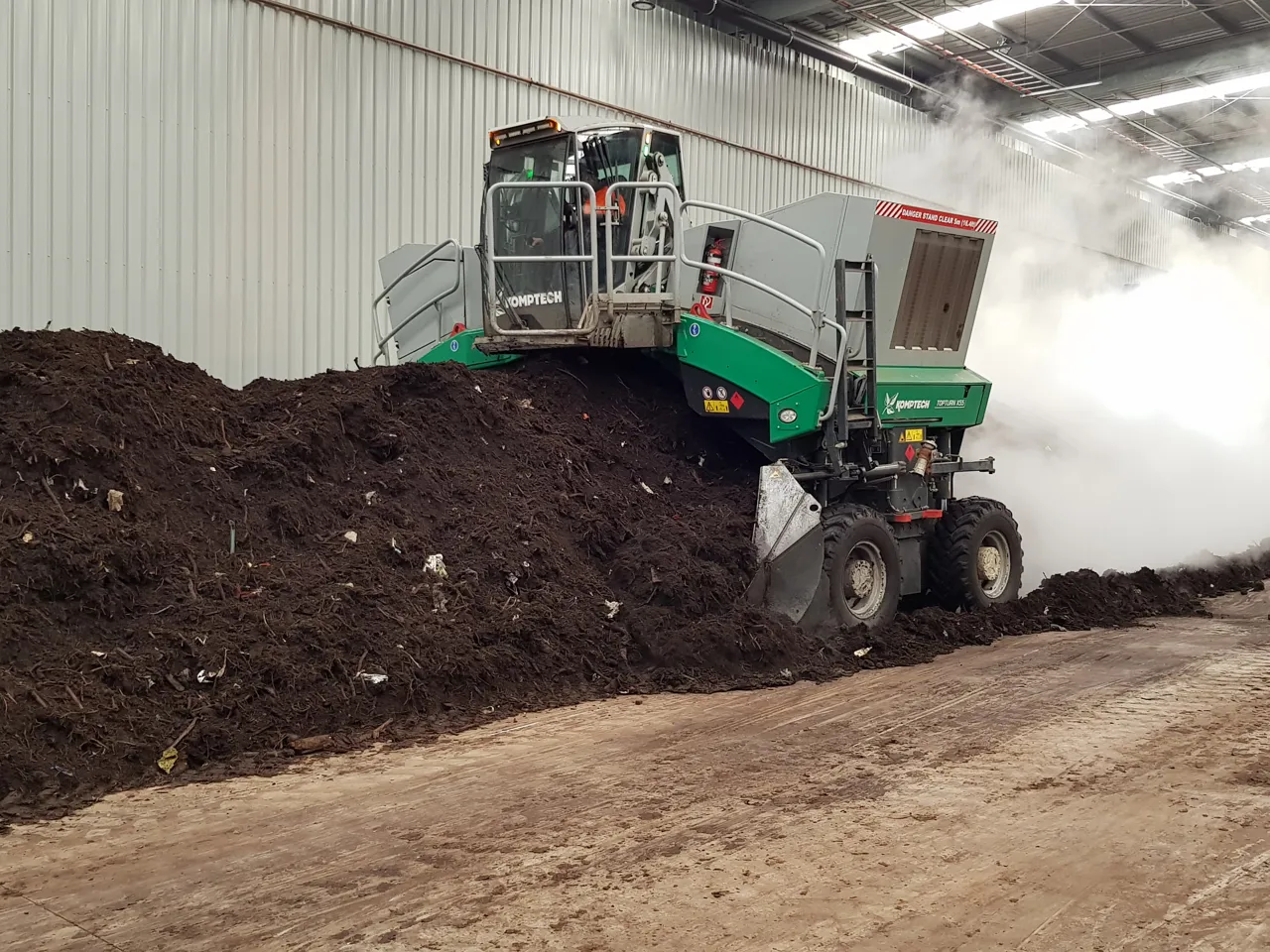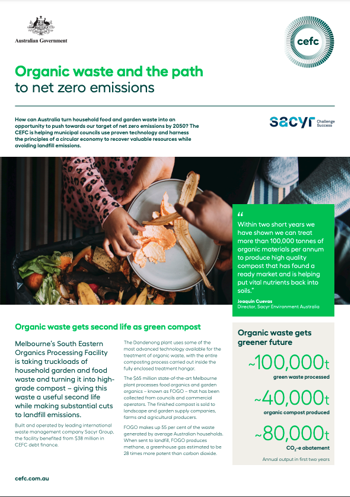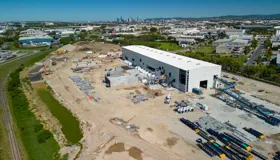
Sacyr transforms organic waste into compost
Circular economy solution reduces landfill and emissions
Melbourne’s South Eastern Organics Processing Facility, built by leading international waste management company Sacyr Group, uses a fully-enclosed in-vessel composting process to turn household organic waste and commercial food waste into a nutrient-rich compost.
$38m
CEFC commitment
~80,000
tCO2-e abated annually
~40,000t
compost annually
Within two short years we have shown we can treat more than 100,000 tonnes of organic materials per annum to produce high quality compost that has found a ready market and is helping put vital nutrients back into soils.Joaquin CuevasDirector, Sacyr Environment Australia
Our investment
The South Eastern Organics Processing Facility, in the Dandenong region of Melbourne, takes truckloads of household food and garden waste from four local councils, as well as food waste from commercial operators and converts it into nutrient-rich compost that is sold to landscaping, garden supply and agricultural businesses.
The plant is processing ~100,000 tonnes of organic material each year, to produce ~40,000 tonnes of compost. This process is estimated to abate ~80,000 tCO2-e annually. The plant has a nameplate capacity of 120,000 tonnes a year to produce an estimated 50,000 tonnes of compost.
The $65 million facility, built and operated by leading international waste management company Sacyr Group, has benefited from $38 million in CEFC debt finance.
our impact
Food organics and garden organics, known as FOGO, make up 55 per cent of the waste generated by average Australian households.
When sent to landfill, FOGO produces methane, a greenhouse gas estimated to be 28 times more potent than carbon dioxide.
The CEFC is helping municipal councils use proven technology and harness the principles of a circular economy to recover valuable resources while avoiding landfill emissions.
Our finance for the South Eastern Organics Processing Facility demonstrates a model for groups of councils considering investing in substantial waste management infrastructure to reduce landfill waste.
Our investment in the facility supports significant estimated emissions abatement over the facility’s lifetime. It also demonstrates the bankability of Waste Supply Agreement-based projects on a project finance basis.
The project has helped develop advanced waste industry skills in Australia and assisted in developing the requisite supply chain to deliver these types of projects.





